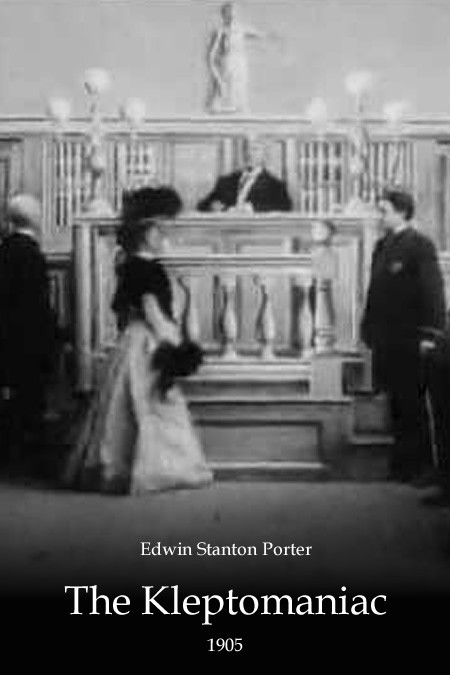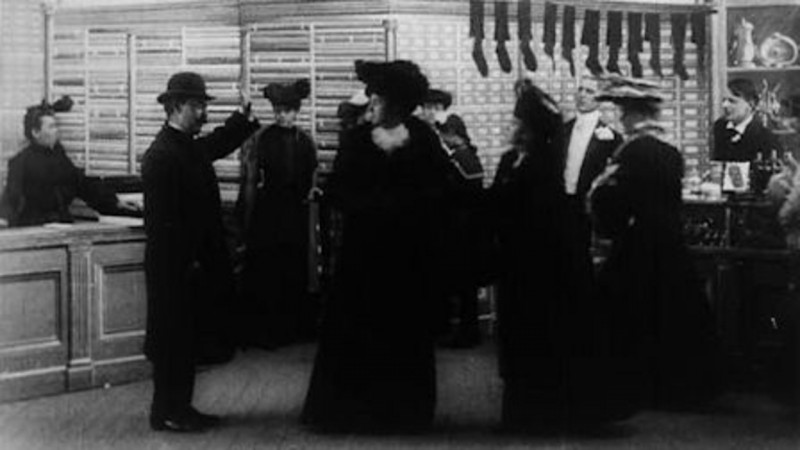The Kleptomaniac

The kleptomaniac, is a short film directed by Edwin Stanton Porter in 1905.
The movie, doesn’t contain technically memorable passages, but the use of cross-cutting to emphasize the difference in treatment of the wealthy kleptomaniac with the moneyless mother of two creatures caught stealing by hunger, making it one of the best examples of social criticism of the early twentieth.
In the first part of the film, it’s shown a well-dressed woman who takes a carriage to a department store. While inside, she’s caught stealing several objects, then captured by store employees and insured to justice. In the second part, it’s shown a poor woman who, desperate, steals a piece of bread in the hope of being able to feed her two crying children.
The epilogue in court, shows the process suffered by both women and punishments that each will face. The film ends with an iconic goddess of justice who holds a balance with unbalanced scales.
Cinema, created to entertain and amaze, sometimes with stunning as absurd special effects, begins slowly to transform itself, evolving. The camera becomes a tool to capture human emotions; moving images: the means to instill (but also: induce, manipulate) the reflection in the audience.
This extreme maneuverability of films, that slowly comes to light, will be decisive for the fate of the cinema. In the following decades, the seventh art will become one of the greatest cultural and popular phenomena in the history of mankind.
